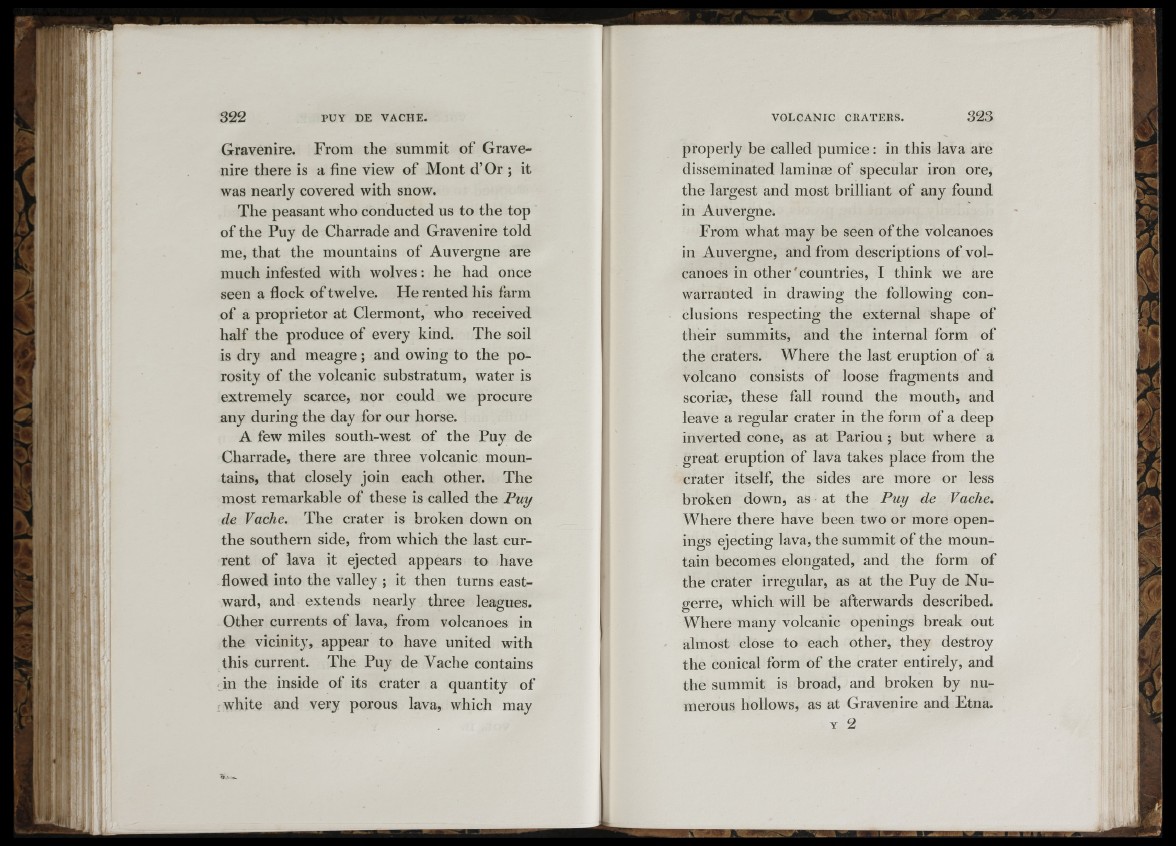
k
Gravenire. From the summit of Gravenire
there is a fine view of Mont d’Or ; it
was nearly covered with snow.
The peasant who conducted us to the top
of the Puy de Charrade and Gravenire told
me, that the mountains of Auvergne are
much infested with wolves: he had once
seen a flock o f twelve. He rented his farm
of a proprietor at Clermont, who received
half the produce of every kind. The soil
is dry and meagre; and owing to the porosity
of the volcanic substratum, water is
extremely scarce, nor could we procure
any during the day for our horse.
A few miles south-west of the Puy de
Charrade, there are three volcanic mountains,
that closely join each other. The
most remarkable of these is called the Puy
de Vache. The crater is broken down on
the southern side, from which the last current
of lava it ejected appears to have
flowed into the valley ; it then turns eastward,
and extends nearly three leagues.
Other currents of lava, from volcanoes in
the vicinity, appear to have united with
this current. The Puy de Vache contains
in the inside of its crater a quantity of
white and very porous lava, which may
properly be called pumice : in this lava are
disseminated laminae of specular iron ore,
the largest and most brilliant of any found
in Auvergne.
From what may be seen of the volcanoes
in Auvergne, and from descriptions of volcanoes
in other'countries, I think we are
warranted in drawing the following con-
elusions respecting the external shape of
their summits, and the internal form of
the craters. Where the last eruption of a
volcano consists of loose fragments and
scoriæ, these fall round the month, and
leave a regular crater in the form of a deep
inverted cone, as at Pariou ; but where a
great eruption of lava takes place from the
crater itself, the sides are more or less
broken down, as at the Puy de Vache.
Where there have been two or more openings
ejecting lava, the summit of the mountain
becomes elongated, and the form of
the crater irregular, as at the Puy de Nugerre,
which will be afterwards described.
Where many volcanic openings break out
almost close to each other, they destroy
the conical form of the crater entirely, and
the summit is broad, and broken by numerous
hollows, as at Gravenire and Ftna.
Y 2
Í ‘i f i-.f il